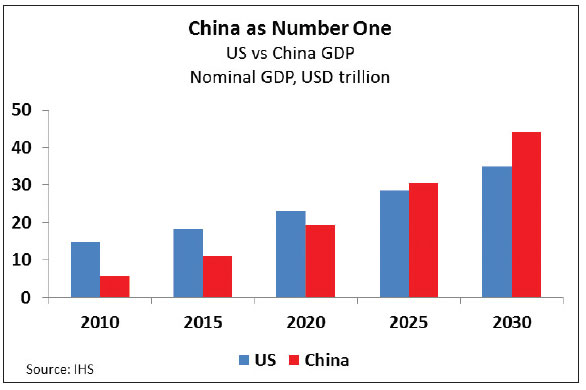Debate on largest economy pointless
By Michele Geraci (China Daily) Updated: 2014-12-30 07:56
 |
|
China is poised to overtake the United States and become the world's largest economy in 2024, due mainly to growth in China's consumer spending, according to a new report from global industrial data and analysis firm IHS Inc. |
As China's GDP growth rate, despite entering a new normal, continues to exceed that of the United States, the country is fast approaching the most anticipated milestone. Depending on how one measures GDP and what adjustments are made, some studies predict that China will become the world's largest economy in a few years, while other studies - which use purchasing power parity-adjusted measures - claim this has already happened.
On a per capita basis, China's GDP is about $6,500 compared with about $45,000 of the United States, that is, seven times smaller. If one uses the PPP-adjusted methodology, then the per capita GDP ratio of the US to China is reduced to about four times. It is at this point in the analysis that the population ratio of China to the US (4.2 times) kicks in to make the Chinese economy appear larger than that of the US.
But this logic is faulty. One uses PPP-adjusted per capita GDP figures to try to compare the living standard of the average citizens in each country, instead of comparing country-level aggregate numbers. Hence, the conclusion that China is now the world's largest economy, on a PPP-adjusted basis, makes little sense. It would be better to just say, "the economic purchasing power of the average US citizen is four times that of the Chinese people", for it better represents the economic gap that still exists between the two countries.
To put this into a historic perspective, in the 1950s the ratio of per capita GDP between the US and Japan was just more than four times, and that is without adjusting for PPP. In other words, China's level of development today is equivalent, at best, to that of Japan more than half a century ago, and it is, and is likely to remain in the medium term, a developing country.











